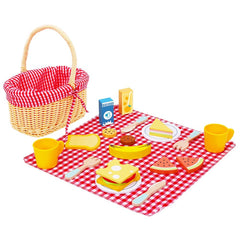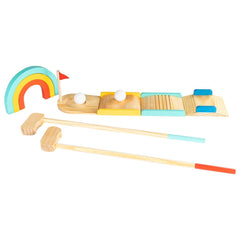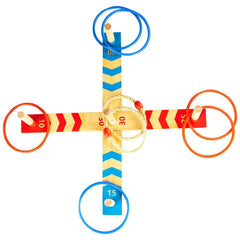90% of a child's brain development occurs before five years of age.
Brain development depends critically on the toddler’s early years. Every sensory experience during this period shapes brain connections. Hence, it is vital to expose children to meaningful experiences like educational and Montessori-inspired activities.
Supporting Brain Development
In the child's early years, play is more than just entertainment. It's how young brains develop, explore, and interpret the surroundings. The excellent design of activity cubes, which naturally promotes early learning, explains why they are such a popular choice for children.
Unlike passive toys that only entertain, activity cubes involve children on several levels: they stimulate their senses, inspire problem-solving, and even help with cognitive growth. Let's explore the science behind activity cubes and the reasons they belong, particularly in your child's toy selection.
Games like the activity cube and activity table help children navigate easy-to-complex problems in a fun and engaging way. Designed to help many areas of brain development, activity cubes come with features including spinning gears, shape sorters, bead mazes, and musical elements.
- Turning knobs, pushing beads, and fitting shapes into slots helps improve hand-eye coordination and finger dexterity.
- Logical thinking and patience are developed when one figures out how to move beads along rails or match shapes to the proper holes.
- Bright colours, varied textures, and moveable pieces captivate a child's senses—all of which are vital for the development of sensory processing.
- Working with little things helps kids develop their control and accuracy, and it also develops spatial awareness in children.
Active Play vs Passive Toys
Not all toys are made equal. Passive toys—such as screens or battery-operated devices—often limit a child's involvement to pressing buttons or observing without much cerebral engagement.
Active play has been designed for interactive and immersive play experiences. These toys promote physical and mental development, as they require kids to move or manipulate them. Such toys allow children to spend energy on physically and mentally stimulating tasks that improve their balance and focus. Activity play cube is one such active toy that nurtures cognitive development in kids.
Unlike passive toys like teddy bears, the activity cube requires the child to move or exert effort to play with it. Activity cubes give countless chances for open-ended play, in which case there is no one right approach. As toddlers learn to negotiate frustration and success, this kind of active play stimulates imagination, clarifies cause and effect, and promotes emotional growth.
Expert’s Opinion
In an article for Business Insider, a parent and researcher wrote, "Overall, I'd recommend this colourful toy [the activity cube] to anyone seeking a product that supports learning through playtime for babies and toddlers." It is quite evident that the activity cube is a popular toy among children and parents alike.
Early childhood teachers claim that multifarious learning experiences are offered by multi-functional toys such as activity cubes. Children can improve their communication abilities without even realising it when they tell stories about their plays or pretend dialogues.
Research has indicated that children can adjust their mental processes by interacting with educational toys, such as the activity cube for kids. An activity cube is perfect for siblings or parent-child bonding since it provides both autonomous and cooperative play possibilities.
Playtime Ideas with Activity Cube
Here are some quick and easy suggestions for engaging playtime ideas with the activity cube:
- Create narratives around the several sides of the cube; perhaps the bead maze is a jungle trip or the gears are a component of a fantastic contraption.
- As they play, make your kids arrange various beads or blocks according to colours.
- Counting together using the sliding parts or bead maze will help you.
- Incorporate the cube into a small obstacle course whereby your child finishes several tasks before tackling the next difficulty.
- Musical Playtime: Have a little group jam if your cube features bells or natural sound-producing components.
Final thoughts
Activity cubes are more than just colourful, striking toys; they are a small powerhouse of learning. Children can develop vital skills with the hands-on, interactive design. The design also keeps playtime engaging and challenging.
Activity cubes remind us that basic, well-made toys may have a significant influence on a child's early development even in a society where computers and digital toys are becoming more and more ubiquitous. You are laying a foundation for lifetime learning with this activity cube, whether they are sorting, spinning, or stacking—one joyful moment at a time.
Therefore, an activity cube could be the ideal choice for your child's early years if you want to make an investment in a toy that provides both amusement and learning.
We hope that the guide above gave you useful insights about the activity cube and will help you find the next best toy for your kids. Explore our entire collection of toys at Barnshenn for newborns and toddlers. Are you in search of additional inspiration? Hop on to our social media handles, like TikTok, Pinterest, and Instagram, for more gift inspiration for toddlers. See you in the next blog.
FAQs
1. What activities are included in the wooden play cube?
- The cube includes activities like spinning gears, bead mazes, sliding tiles, and other interactive elements to stimulate your child’s development.
2. Is the cube easy to assemble?
- The activity cube comes fully assembled, except for the wooden top with a bead maze, which is easy to attach to the cube.
3. Can my child outgrow this toy quickly?
- No, the multi-activity play cube has been designed to grow with your child. The wooden cube comes with different activities to allow your child to explore different games as they grow up





